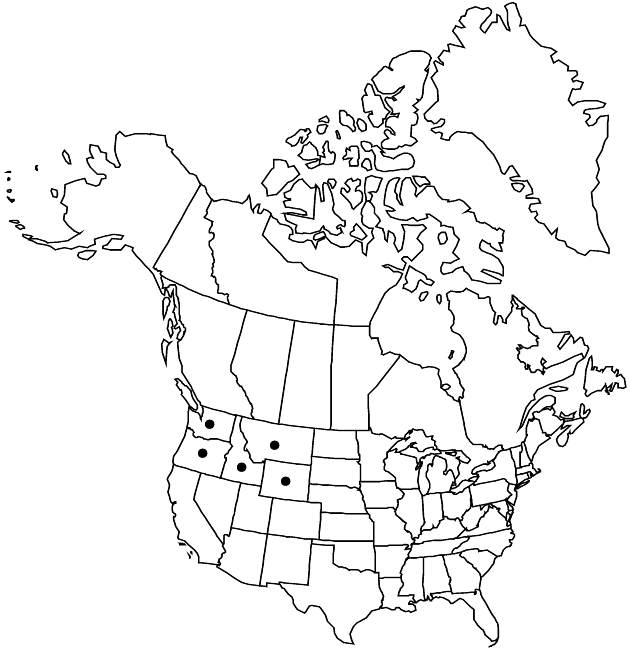Balsamorhiza incana
Trans. Amer. Philos. Soc., n. s. 7: 350. 1840.
Revision as of 20:35, 16 December 2019 by FNA>Volume Importer
Plants 20–35(–70) cm. Basal leaves: blades white to grayish, lance-ovate to oblong, 10–45 × 3–7(–10) cm (1-pinnatifid, lobes ovate to lanceolate, 20–50 × 5–25 mm), bases broadly cuneate to truncate, margins entire or serrate (plane, not distinctly ciliate), apices obtuse, faces usually densely, sometimes sparsely, tomentose. Heads usually borne singly. Involucres hemispheric, 20–25(–30) mm. Outer phyllaries ovate to lanceolate or linear, 15–20 mm, shorter than inner, apices acute to attenuate (margins ± ciliate). Ray laminae 20–40(–50+) mm. 2n = 38.
Phenology: Flowering May–Jun(–Jul).
Habitat: Grassy meadows, dry, rocky sites, openings in conifer forests
Elevation: 1200–2800 m
Distribution

Idaho, Mont., Oreg., Wash., Wyo.
Discussion
Balsamorhiza incana hybridizes with B. sagittata.
Selected References
None.
Lower Taxa
None.